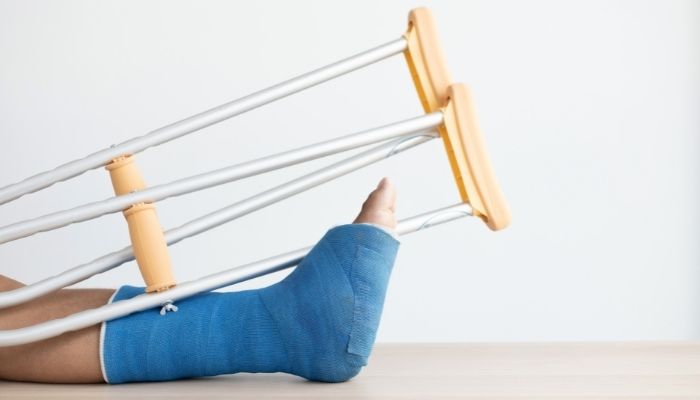Shyamali was a regular student in her school. But, for the last few days, she was not coming to the school. It was a week later she came back with a cast on her right hand. When her friends asked what had happened to her right hand, she replied she fell off the stairs and got a bone fracture in her right hand. So, what is a fracture? Fracture is a condition where your bone gets damaged partially or completely due to an injury. Our body is made up of 206 bones comprising big and small bones. Out of these bones, any bone can get damaged due to a fall or a hitting of something hard.
Like all other body parts, the bone also has an inherent ability to heal and repair itself, but for this, it needs a proper bone fracture treatment. An orthopedic doctor will need to give you a suitable fracture treatment to immobilize the bone so that it can heal faster.
Let us first throw some light on the common reasons for a bone fracture and then understand the best fracture treatment suggested by the doctors.
Common Reasons for a Bone Fracture
- Motor Vehicle Accident
- Slip and Fall Accident
- Assault and Attack
- Extreme Sports
- Trauma
- Child Abuse
- Domestic Violence
- Osteoporosis
- Overuse of a Bone due to Repetitive Motion
Read More: How To Get Calcium For Strong Bones: Best Calcium Tablets For Bones
How do Fractured Bones Heal?
The three stages of bone healing include:- The Inflammatory Stage: The first stage of bone fracture treatment is the inflammatory stage, which is also referred to as the fracture hematoma formation stage. This stage starts as early as about 48 hours after the injury when the blood clots around the injury and there is a formation of a hematoma. Due to this hindrance in the blood flow, the bone cells surrounding the fracture usually die out.
- The Repairing Stage: Within the first few days when your bone gets fractured, this stage of repairing kick starts on its own. The average time frame of the repairing stage is 2 or 3 weeks. It is during this repairing stage that the body starts developing cartilage and the tissues around and inside the bone fracture location.
- Bone Remodelling Stage: Last and third main stage of a broken ribs treatment or any other bone fracture treatment is the bone remodeling stage. In this final stage, the sponge bone is replaced by the solid bone and the healing is complete. However, even after this stage for some time the bone may remain slightly swollen from the outside but it gets resolved gradually.
The Best Bone Fracture Treatment
- Traditional Cast Treatment: The most common bone fracture treatment given by several Orthopaedic doctors is in the form of a traditional cast. In this treatment, the bone is repositioned to its normal place and a cast made of plaster of paris or fiberglass is made around the affected area to immobilize the broken bone. Usually, this traditional cast treatment is opted to treat fractures in bones of the wrist, arms, leg, and foot.
- Brace or Functional Cast Treatment: Second fracture treatment that doctors prescribe is functional or a brace cast treatment. The difference between the traditional and functional cast treatment is that the latter allows some restricted movement of the joints around the broken bone. The functional cast is put on the broken bone after putting an initial cast for some time to make it easy for initial mobilization of that limb.
- Vertebroplasty Treatment: The treatment option for a bone fracture in the vertebrae is vertebroplasty, where the doctor uses an injection to inject bone cement directly into the spine to make it stable. This treatment reduces the pain and prevents fractures of the vertebrae in the future to a great extent.
- Kyphoplasty Treatment: Again, for fractured vertebrae, there is another treatment called kyphoplasty. In this treatment, the doctor inserts a device much like a balloon in the vertebrae that got fractured. This balloon-like device then tries to restore the shape of the vertebrae. When this device is removed later, it leaves behind a small cavity which is then filled with bone cement.
- Open Reduction Treatment: In case of a severe or complex bone fracture like if a person wants to get a broken ribs treatment, the doctor is most likely to advise an open reduction treatment. Here, surgery is conducted to reposition the broken bone. Open reduction treatment is also done in two ways:
- Internal Fixation: In this procedure, special metal plates or screws are attached to the bone outer surface. Sometimes, even metal rods are inserted in the center of the bone to repair it.
- External Fixation: As the name suggests, here an external device is attached to the broken bone through surgery. Moreover, some special screws and metal pins are used to support the bone fracture site and to immobilize that area to make it heal faster.



